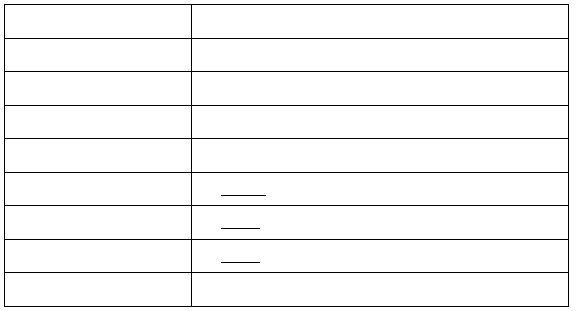
E-11
reagent added
Test Tube 2
5 drops of 0.10 M Fe(NO3)
3(aq)
Test Tube 3
5 drops of 0.020 M KNCS
(aq)
Test Tube 4
5 drops of 6.0 M NaOH
(aq)
Test Tube 5
5 drops of 0.20 M NaF
(aq)
Test Tube 6
**2 drops of 0.20 M Na2©2O
4(aq)
Test Tube 7
**1 drop of 0.10 M K
4
[Fe(CN)
6
]
(aq)
Test Tube 8
**1 drop of 1.0 M NH3
(aq)
Test Tube 9
5 drops of 0.10 M AgNO3
(aq)
When you have finished recording your observations, pour all of the solutions as well as the first rinse of the
test tubes into the your toxic waste beaker.
Part II. Solubility of Lead Salts
A.
Solubility Pb(NO3)2 and PbCl2 in solutions of varying chloride concentrations.
1.
Using automatic dispensers, combine 1.0 mL of 1.0 M Pb(NO3)2 with 1.0 mL of 1.0 M NaCl in a
13 x 100 mm tube (test tube #1) and mix thoroughly. What do you observe? Record your
observations. Add 6.0 mL of deionized water (total volume is now approximately 8 mL) and mix
thoroughly. Set this test tube aside to allow the precipitate settle.
2.
In this step, a reaction solution will be prepared in which the initial concentration of HCl above the
PbCl
2(s)
is about 3.0 M.
Again, using the automatic dispensers, combine 1.0 mL of 1.0 M Pb(NO3)2, with 1.0 mL of 1.0 M
NaCl in a clean test tube. Add 4.0 mL of deionized water, stir, and then add 2.0 mL of 12.4 M HCl to
the test tube and mix thoroughly. WARNING: 12.4 M HCl is very corrosive. Wash immediately
if you get any on your skin. Cover the test tube with parafilm and mix well. Set this test tube aside
to allow the precipitate to settle.
3.
In this step, a reaction solution will be prepared in which the initial concentration of HCl above the
PbCl
2 (s)
is about 9.0 M.
Repeat the combining of 1.0 mL of 1.0 M Pb(NO3)2 with 1.0 mL of 1.0 M NaCl in a clean test tube.
Add 6.0 mL of 12.4 M HCl to the precipitate and mix thoroughly. Cover the test tube with parafilm
and mix well. Allow the precipitate to settle. Record your observations.
